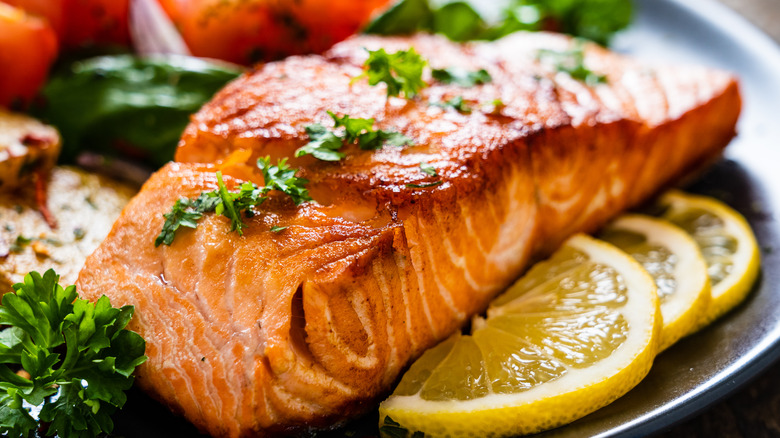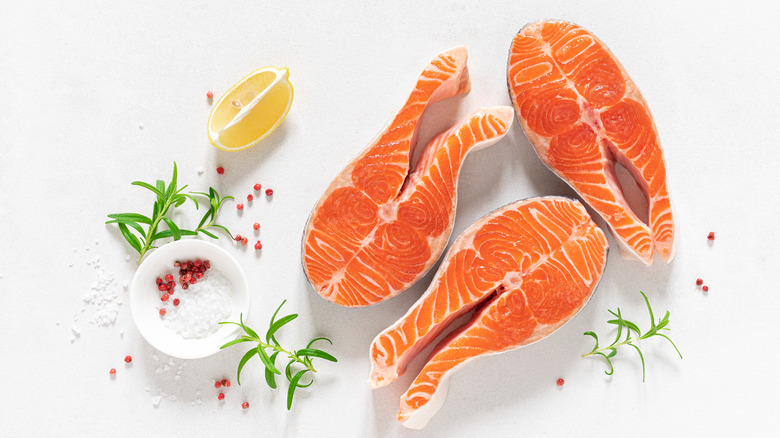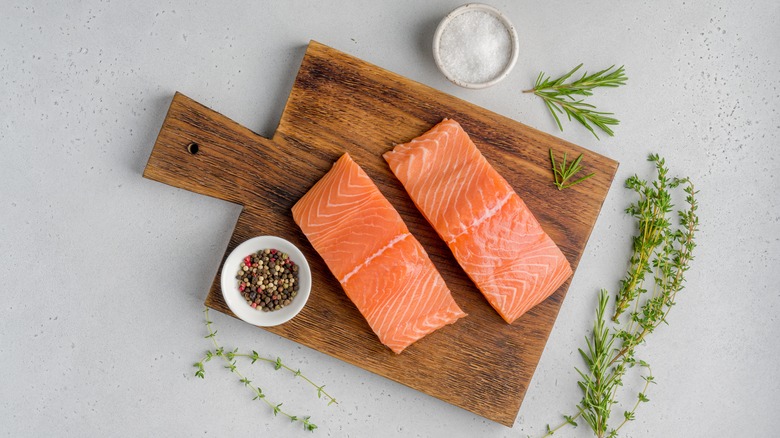Does Salmon Cause Mercury Poisoning?
Salmon is a rich source of protein, potassium, and omega-3 fatty acids and can be an important inclusion to a healthy diet. But what about warnings of fish consumption and methylmercury (mercury) exposure? First, it helps to understand that methylmercury is a neurotoxin associated with consuming certain kinds of seafood, that can cause neurological impacts in adults such as loss of peripheral vision, feeling sensations of pins and needles in extremities, lack of coordination, speech impairment, and muscle weakness, according to the United States Environmental Protection Agency.
Most adults have some level of methylmercury exposure, but typically only high exposure to the toxin through food sources will adversely impact one's health. It should be noted that high levels of methylmercury in pregnant women can adversely affect a baby's growing brain and nervous system, causing negative impacts to their cognitive functioning. The Mayo Clinic recommends that pregnant women include seafood in their diet, so long as it's a fish known to be low in contaminants and pollutants. If you're pregnant, speaking with your doctor about seafood recommendations may be helpful.
Salmon's methylmercury content
So what about salmon's methylmercury content? Harvard Health Publishing suggests that salmon is relatively low on the methylmercury toxicity scale, and can provide many health benefits for the brain and heart — two of the organs methylmercury is also said to harm in excess. They go on to add that certain kinds of salmon may contain more methylmercury than others. In fact, independent studies conducted by the U.S. Food and Drug Administration (FDA) found that canned salmon contains 11% lower methylmercury concentrations than fresh and frozen salmon.
The FDA also released guidelines for fish consumption, ranking salmon as a best choice, safe for adults and children to consume on a weekly basis. The guidance further suggests adults should eat two to three 4-ounce servings per week from the low-methylmercury fish category, and children should eat one ounce starting by age 2. Dietary variety that includes fish and shellfish like cod, sardines, scallops, and shrimp can help boost the health benefits of eating fish and effectively lower exposure to methylmercury.
Salmon can be a good alternative to other seafood options
Salmon's relatively low mercury content makes it a smart choice compared to other fish that contain more of the neurotoxin. According to the U.S. Food and Drug Administration, the fish that ranks the highest when comparing mercury levels is the tilefish from the Gulf of Mexico, followed by swordfish, shark, king mackerel, and fresh or frozen bigeye tuna. Salmon, with a much lower concentration of mercury, is a safe alternative to some of the most popular types of seafood.
Salmon is also one of the healthiest foods in the world, according to Healthline. It's packed with omega-3 fatty acids, protein, selenium, and other key nutrients. Studies have also found several potential benefits of regularly consuming the fish, including improved brain health, lower risk of depression, reduced inflammation, and a decrease in belly fat.
Besides its low level of mercury and impressive health benefits, the Environmental Defense Fund highlighted salmon as one of the most eco-friendly fish options available. Specifically, the organization gave a "best" eco-rating to Wild Alaskan salmon, farmed or Atlantic salmon (when sourced from land-based or tank-based farms), and canned salmon.



